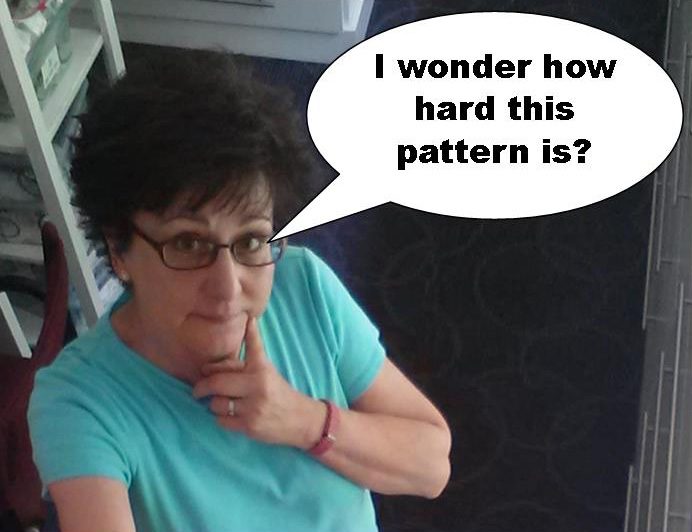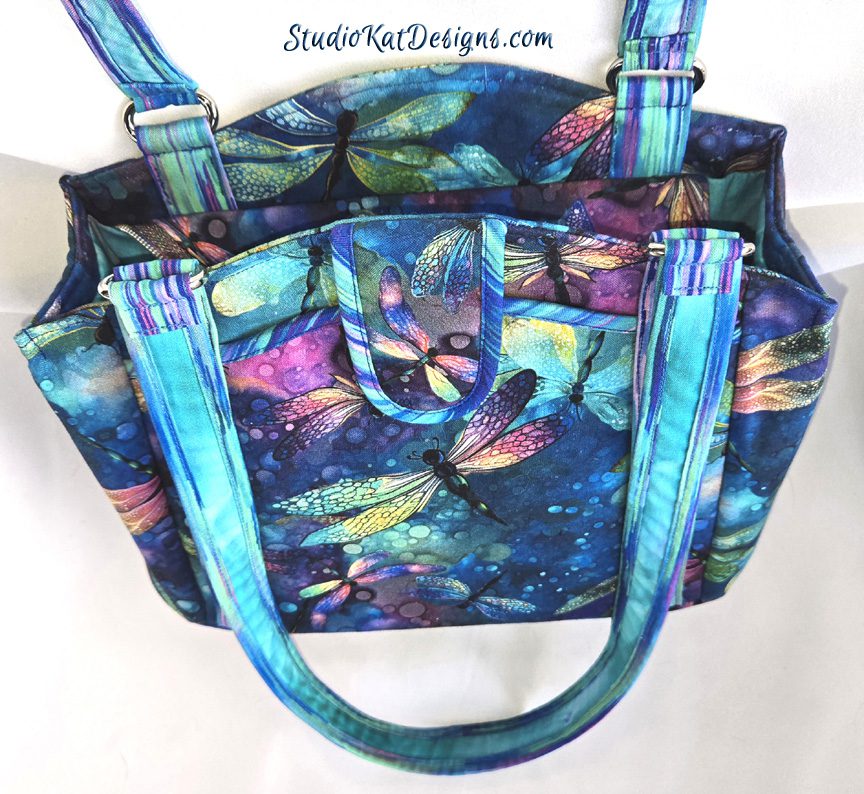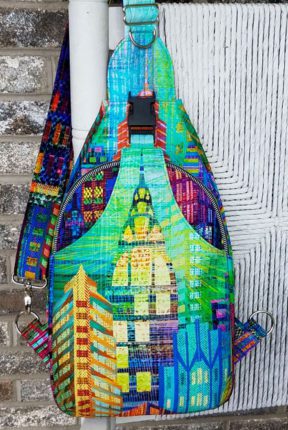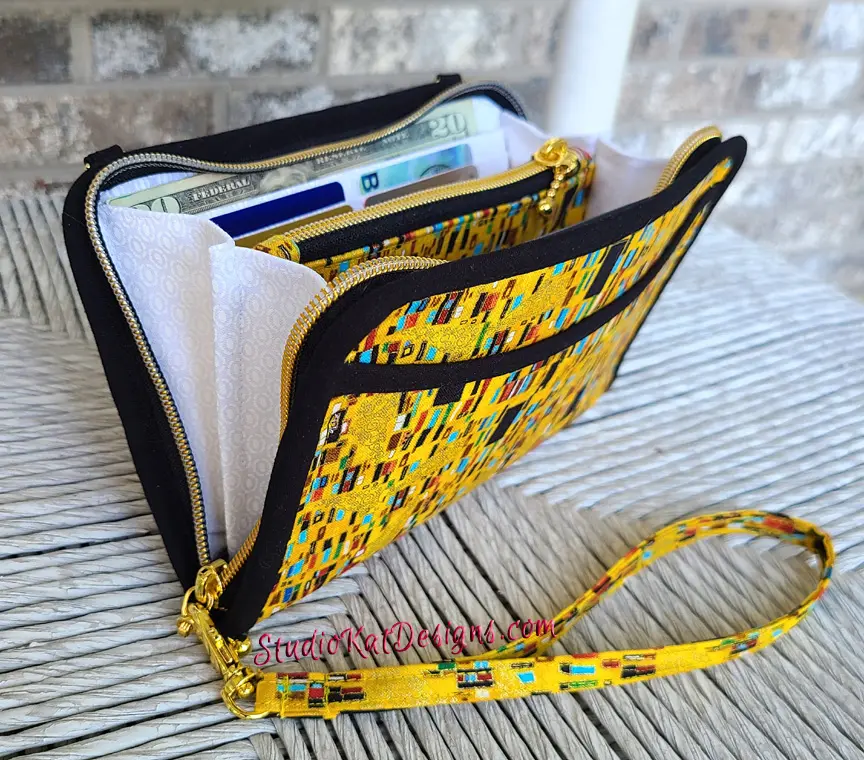So…
Here’s a question we get asked on a regular basis, particularly at shows, and it goes something like this. People come into our booth because they want their chance to check out our bags in person. They open them up, see all the zippers and storage areas and in general how different they are from the majority of bag patterns available today and that’s when we hear this very common question…

Are your patterns too hard for a beginner?
And you know what? I never really know how to answer this question. When folks ask us directly, we always tell them that we never claim to be making patterns for the outright beginner. I feel like that audience is WAY over-served anyway. What we say instead, is that if you have basic sewing knowledge… if you’ve made one or two craft type items already (as opposed to garments)… if you’re comfortable sewing along curved edges and in tight corners… AND perhaps most important, if you can follow instructions in the order in which they are presented, then you should have no problems with our patterns. But how in the world do we say this in a less verbose way so it fits on a pattern cover?
Wouldn’t it be great if we could come up with a simple labeling system so that customers could tell at a glance how difficult a particular pattern is? But there’s one REALLY big issue standing in the way of a system like that…because here’s the deal; in terms of sewing, what exactly IS a beginner? Your idea quite likely looks totally different than mine or anyone else’s for that matter.
Webster’s Dictionary defines a beginner as a person who is beginning something or doing something for the first time. But since this describes almost no one who comes shopping with us, I decided to start doing a little informal polling of my own while we were at the Road to California show in January, and again at AQS Quiltweek Paducah. I asked them the following two questions;
a) how many years have you been sewing? … and
b) what do you consider your skill level to be?
And here’s what I found out… Well over HALF the women I questioned classified themselves as either a beginner or an advanced beginner! Even women with 5-10 years of experience! Yet when I probed further about certain basic skills, such as could they: sew in a straight line, sew along a curve, follow pattern instructions & diagrams, ascertain the right side from the wrong side of fabric, choose appropriate fabric for projects, etc. etc … their answers without fail were… of course!
But that wasn’t the only mislabeling I found, because this categorizing issue held true for other skill levels as well because with very few exceptions the only women who ever seem to classify themselves as outright advanced or expert have been pursuing this hobby for 30 years or much longer… oh… except for those that call us to complain about one of patterns, at which time they are proud to declare that they’ve in fact achieved expert status and never in their long and storied career have they encountered anything as ____(fill in the blank)___ as my pattern (but that’s fodder for another post on another day). And here’s the deal…when it comes to assigning pattern difficulty ratings…
It turns out that skill level is not the only consideration!
Because here’s yet another variable to consider. There seems to be an almost automatic assumption today that easy (beginner) patterns equate to quick results, and conversely that projects requiring more time to complete MUST require advanced skills and are therefore… difficult. I don’t think this correlation is necessarily true, because more times than not when we’ve been given the opportunity to dig deeper with customers who have called a particular pattern “hard”, we’ve heard statements like:
* there were 4 (double-sided) pages of instructions
* there were WAY too many pattern pieces
* it took too long to complete and I couldn’t finish it in time for _____________.
I’m not sure when difficulty ratings started being equated with project completion time, and I’m not at all sure how to deal with that misunderstanding. Because the bottom line is… our bag designs are more detailed than many and this probably isn’t news to anyone. Its these very features and details that our regular customers like most about our patterns. But lets be straight, should it really be a surprise to anyone that all of those extra features & details might just add up to longer completion time? And therefore by extension, shouldn’t the following equation hold true?
Extra details/features = extra pattern pieces = more pages of instructions
So in conclusion…
Is it any wonder that all of these variables make it really hard if not impossible to assign a skill level to our patterns (or anyone else’s for that matter). Which might explain why to date we’ve pretty much just avoided skill labels of any kind.
So what’s the solution?
Here’s a few options we’ve kicked around a bit for future patterns:
- List the skills required to complete the pattern—- the problem with this alternative is that with the detailed drawings we provide in the instructions and the free color pdf helps on the website, its our contention that we can TEACH customers these new skills in the course of making up the bag. Listing these skills in this way makes it sound like these skills are a prerequisite.
- List what skills we expect our customer to learn in the course of making the bag. For example- they might learn how to install a zipper (which I’m glad to tell you is totally different and WAY easier than installing a zipper in a garment, although many customers refuse to believe that)
- List the projected amount of time it will take to complete the project. This could address the time issue right up front, but you know what…. for many people, (myself included) it’s the PROCESS of completing the project that’s truly enjoyable… even if (or shall I say ESPECIALLY if it takes a whole weekend). I really don’t want the time factor to be seen as a negative which I’m afraid this does and besides, I think most anyone should be able to equate the extra details and features our project offer as taking additional time to create.
And now…. it’s YOUR turn!
Do YOU think that there is a consistent concept of what various skill levels mean? Or do the definitions vary as wildly as I think it does?
Do any of our possible solutions resonate with you? Or would they just make it more complicated to find the pattern that’s right for you?
Might you have another idea for us to consider? If so, I’m all ears!
And remember, we love reading your comments and answering your questions too, so please feel free to leave them in the space provided below.
Check out the best sewing pins with me on Pinterest, join in on discussions or show off your work in our FaceBook Group, or get your daily sewing fix on our Facebook Business Page or get behind the scenes scoops on Instagram, and be the 1st to know about new patterns, discount codes and sample sales by signing up for our monthly newsletter.






